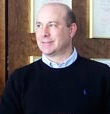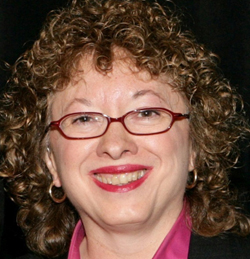A question he asked in one of his classes — to which the professor had no answer — resulted in a senior thesis project, which in turn resulted in a couple of patents with which he launched BioMed Sciences while still a student, in 1987.
In the early ’90s, as Dillon started to commercialize his first product, he moved the business to Allentown, where he found assistance from Ben Franklin Technology Partners of Northeastern PA and Lehigh Valley’s Manufacturers Resource Center.
The company offers products to treat burn wounds, facilitate the prevention of scars and, most recently, to treat wrinkles. BioMed’s has customers all over the world and its products help people heal every day.
What was the inspiration behind BioMed Inc.?
I ended up focusing on biomedical ceramics at Alfred University, which has to do with teeth and bones.
I asked a question in my biomaterials engineering class one day, and my professor didn’t have an answer for it. I asked why we couldn’t make a mixture of silicone and polytetrafluoroethylene [PTFE, popularly known by the brand name Teflon] that would give the right properties for biocompatibility.
When it came time to pick a thesis project during my senior year, I went to the professor and asked to research this question. The professor didn’t think it would work because silicone and PTFE don’t mix — like oil and water. A couple of months into it, I came back and showed him some samples of materials I had made, and he said, “Wow! How’d you do that?” He said I could get a patent on it.
This was the genesis of BioMed Sciences. The material (silicone and PTFE) is very skin-like. I had originally intended to create a bone implant for facial reconstruction using the polymer composite and ceramic. But very quickly, after talking with the FDA, I realized that artificial skin would have a much easier regulatory path than the bone implant. So, early on I decided to develop the artificial skin; the bone implant never became commercial, though I do have a patent on it.
I got an A on the thesis.
How does the product work?
The first product we introduced was Silon-TSR (temporary skin replacement) which acts like an artificial epidermis. It’s a very thin membrane that performs the function of an epidermis for partial-thickness wounds like second-degree burns. It forms a barrier to infection and a moisture/vapor barrier.
We also have the Silon-TSR rigid face mask for burn treatment, and other products in this line.
From there we moved into products used for treating scars. Other people discovered that silicone had an effect on preventing scars. Once I learned about that, I realized I could apply my core technology of silicone/PTFE to make a smoother and more durable product for scar management. So we developed the Oleeva and Silon brands of scar treatment products. The Oleeva products are self-adhesive, similar to a bandaid, and they’re reusable. The technology is sold in the retail market as ScarAway.
How did you get started?
In 1987, I incorporated and sold stock to capitalize the company. Over the course of six or seven years, through a series of stock offerings, I raised about $3 million. At that point, I was in a position to create manufacturing equipment and hire employees; that’s when I moved to the Lehigh Valley.
I chose Allentown because it was closer to home and because the BFTP/NEP was here. They provided a level of credibility for what I was working on. They also had resources to help with the technology and the business plan. They helped me to build our initial manufacturing operation and hire my first employee. Prior to that, I was making the silicone/PTFE material in a frying pan in my apartment.
My first employee, who helped build the machinery, is still with me. My office manager has been with me for 21 years. My customer service representative has been with me 18 years.
Did you take advantage of any other resources in the trgion?
The MRC has been helpful, providing funding; the international and national trade shows and conventions have also helped. We’re mostly funded through private investors.
How has the company grown?
We started with one employee in the early ’90s; now we have 20 people. We’re renting about 17,000 square feet of space. My goal is to buy a building in the next two years, and build a second production line that is faster, more efficient and with greater capacity.
I have about 50 patents now and we sell internationally in about 50 foreign countries. We’re still a small company, but we have a long reach.
Who are your customers?
Domestically, we sell directly to burn centers and also, by referral, to plastic surgery patients. We also sell ScarAway through the retail market in stores like Walgreen’s, Walmart, CVS and Rite-Aid.
Internationally, we sell through several key distributors in Europe, Latin America, Brazil, Asia and Australia. That’s typically done with a co-branding arrangement, using their brand name and adding “with Silon technology.”
Most recently, we have launched a product through a partner, the Dr. Denese skincare brand, on QVC. It’s a wrinkle treatment that is part of our “renewing technology” line. We have taken one of Dr. Denese’s active ingredients and incorporated it into our patch technology.
What has been the biggest challenge in getting your company off the ground?
As an engineer, I totally underestimated the marketing challenge. When I got the first FDA approval on the wound-dressing product, I wrote a letter to 130 burn centers in the U.S. and Canada. There was dead silence! I got no response whatsoever.
Looking back, quite honestly, if a 23-year-old guy came to me now with the business plan I had, I wouldn’t invest a dime in him.
What got me through was persistence, the backing of my shareholders, winning one account at a time and gaining clinical acceptance. I started attending the annual conference of the American Burn Association every year; after four or five years, the burn surgeons finally asked me to tell them what I had. Gradually, people bought the product and I got doctors’ endorsements. It was a slow process.
What’s the big differentiator for your products?
Our core technology enables us to engineer a wider variety of films and membranes and patches. Ordinary silicone doesn’t have the mechanical integrity for this.
What’s next for BioMed Sciences?
We’re moving more into active ingredients. The new product for wrinkle treatment is part of this next-generation technology.
Writer: Susan L. Pena

↑ Top


